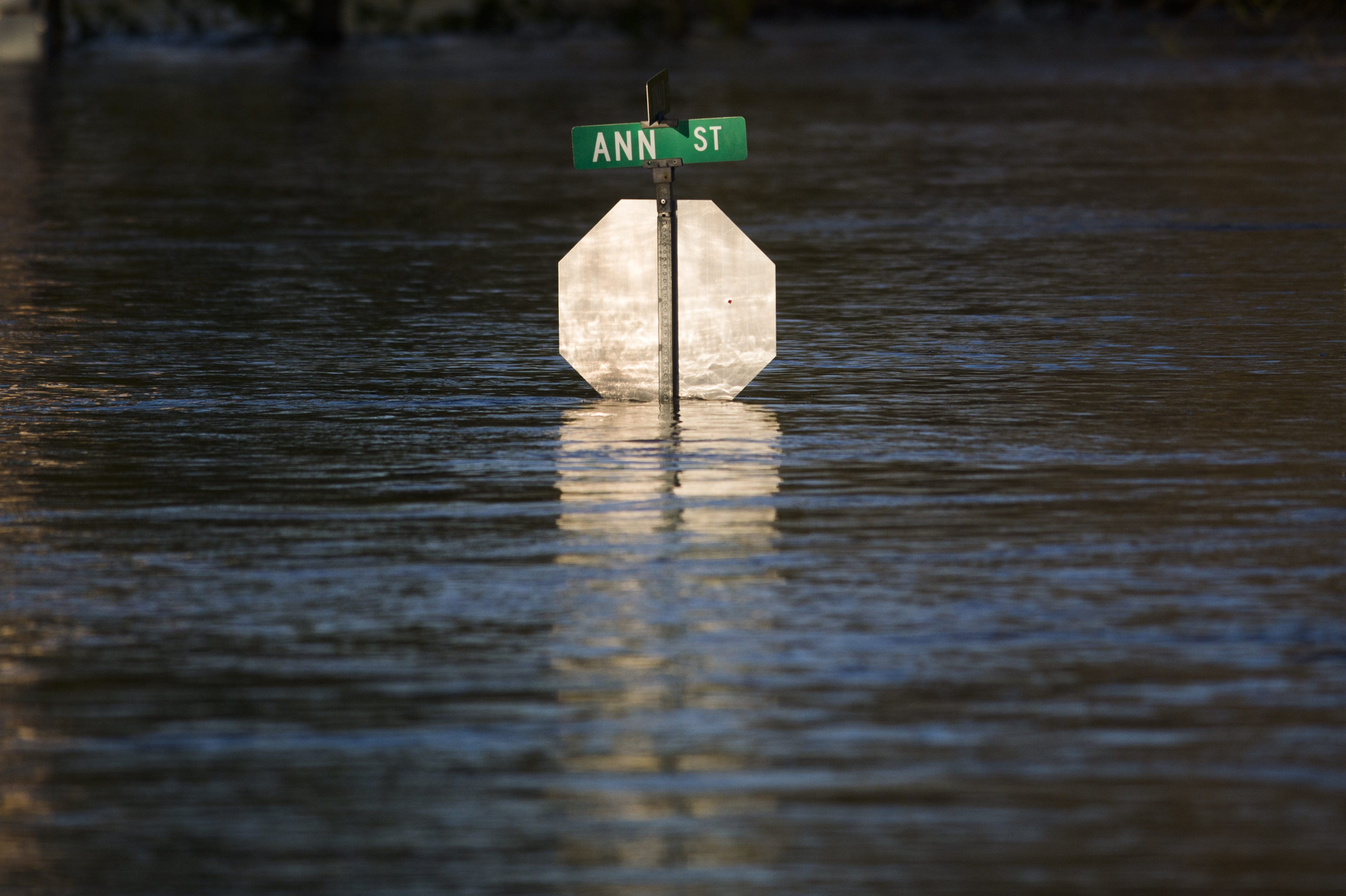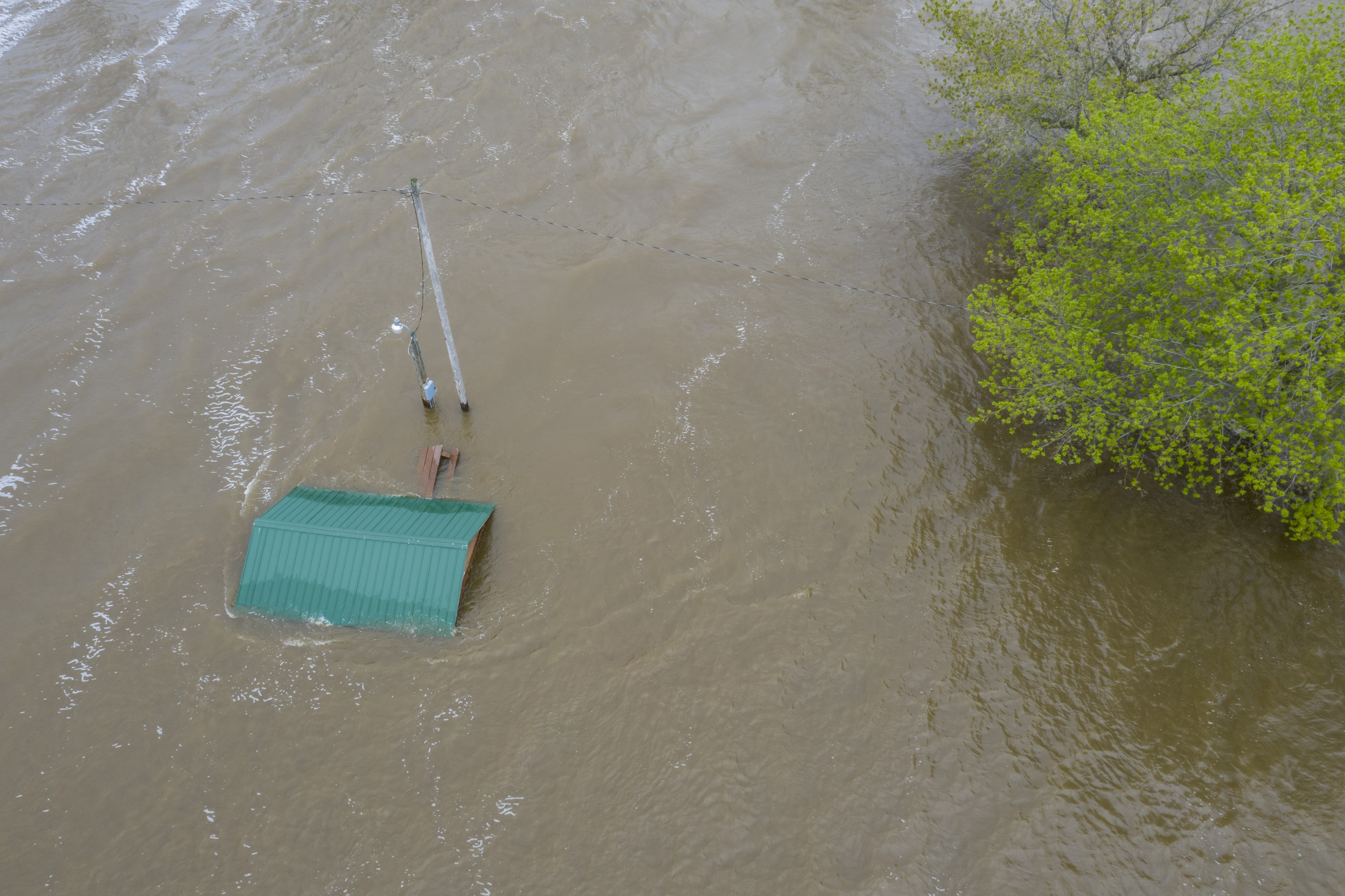
By John Flesher, AP Environmental Writer
TRAVERSE CITY, Mich. (AP) — It took seven years to settle on a plan for cleansing two rivers and floodplains polluted with dioxins from a Dow Chemical Co. plant in central Michigan. The work itself has lasted nearly twice as long, with plenty still to do.
Now, scientists and activists fear some of the progress may have washed away with floodwaters that overwhelmed two dams this week, chasing 11,000 people from homes in and near Midland, the company’s headquarters city.
The Tittabawassee River flows past the Dow plant and eventually meets the Saginaw River, which continues into Lake Huron’s Saginaw Bay. That 50-mile stretch is tainted with dioxins — highly toxic compounds that researchers say can damage reproductive and immune systems and cause cancer. The area is on the federal Superfund list of hazardous sites.

This photo provided by Maxar Technologies shows homes and other buildings surrounded by floodwaters in Midland, Mich., Wednesday, May 20, 2020. (Maxar Technologies via AP)
Regulators and company officials said Thursday it was too early to tell whether the swollen river had damaged spots that had been repaired or swept pollutants farther downstream. Dow said it would inspect each cleanup location as floodwaters recede and sample for new contamination.
The projects “held up remarkably well” during a 2017 flood “and we are confident that we will see a similar outcome this time,” spokesman Kyle Bandlow said.
The U.S. Environmental Protection Agency said it would team with the Michigan Department of Environment, Great Lakes and Energy to evaluate any chemical releases from the plant, although Dow had reported none. Damage from the flood three years ago was “minimal” and required only minor repairs, EPA’s regional office in Chicago said.
But a similar outcome is unlikely after this week’s considerably bigger flood, said Allen Burton, a professor of environment and sustainability at the University of Michigan.
“There’s no reason to expect that everything would remain in the same place after a massive flood like this,” Burton said. “No scientist out there would predict that will happen.”
Erik Olson, a toxic chemicals specialist with the Natural Resources Defense Council, said floods produced by hurricanes have covered hazardous waste sites and carried contaminated wastes long distances.

A view of the flooded area near the Sanford Dam on Tuesday, May 19, 2020. Residents were told to evacuate due to the dams on Sanford and Wixom Lakes no longer being able to control or contain the amount of water flowing through the spill gates. (Kaytie Boomer/The Bay City Times via AP)
“You can think you’ve contained toxic chemicals to a limited area, but a flood can scour that up and move it,” Olson said. “We saw that with Katrina. What happened there is exactly what we’re worrying about happening in Midland.”
In a report last year, the Government Accountability Office said EPA should take additional steps to safeguard Superfund sites from the effects of climate change, including flooding that might result from heavier downpours. It said 60 percent of Superfund sites not on federal property were vulnerable to floods, storm surge, wildfires, and sea level rise associated with global warming.
Dioxins are byproducts of some of the hundreds of chemicals manufactured over the years at the Dow plant, which began operating in 1897. It now produces silicones used in a variety of home and personal care products and electronics.
The plant also has a small nuclear reactor, used for research, Bandlow said. Dow notified the U.S. Nuclear Regulatory Commission on Tuesday that it had been shut down earlier because of the coronavirus pandemic.
Liquid wastes containing dioxins from the plant were dumped into the river in the early 20th century. The compounds later were incinerated, producing air pollution that settled into sediments, riverbanks and floodplains over decades.
Their discovery along the Tittabawassee River in 2000 sparked a lengthy clash between Dow, regulators and environmental groups over the seriousness of the problem and how to fix it.
Dow began cleanup in 2007, supervised by EPA. The Tittabawassee and its banks were divided into seven segments. The first five are mostly complete. Work on the remaining two began last year.
Thousands of cubic yards of contaminated sediments have been removed and banks have been stabilized. In areas where digging up the dioxins was judged too difficult or impractical, tainted soils were covered with protective mats and deep-rooted plants.
More cleanup is planned along 21 miles of floodplains. EPA expects the Tittabawassee section to be finished next year, followed by work on the Saginaw River.
“We’ve been feeling pretty confident that this is going to be a successful cleanup,” said Terry Miller, chairman of the advocacy group Lone Tree Council and member of a community advisory panel. “But this 500-year flood is a wild card.”
Thorough inspections and analysis will be crucial to determine whether the projects are intact and need repairs, he said.
“The post-flood assessments will help identify if any additional cleanup is needed,” EPA said.
Environmentalists said they were concerned about releases of pollutants aside from dioxins, although Dow said there had been none.
“The long-term threats to the health and safety of the community are significant, given what we know is in the river and the holding ponds and the Superfund site,” said Lisa Wozniak, executive director of the Michigan League of Conservation Voters.
Catch up with more news on Great Lakes Now:
Midland Flooding: Climate change and rains exacerbate dam infrastructure issues
Superfund Sites: New Detroit River site added for threats of PCB, metal, cyanide contamination
Featured image: Floodwater reaches the bottom of a stop sign, Wednesday, May 20, 2020, in Midland, Mich. (Katy Kildee/Midland Daily News via AP)




